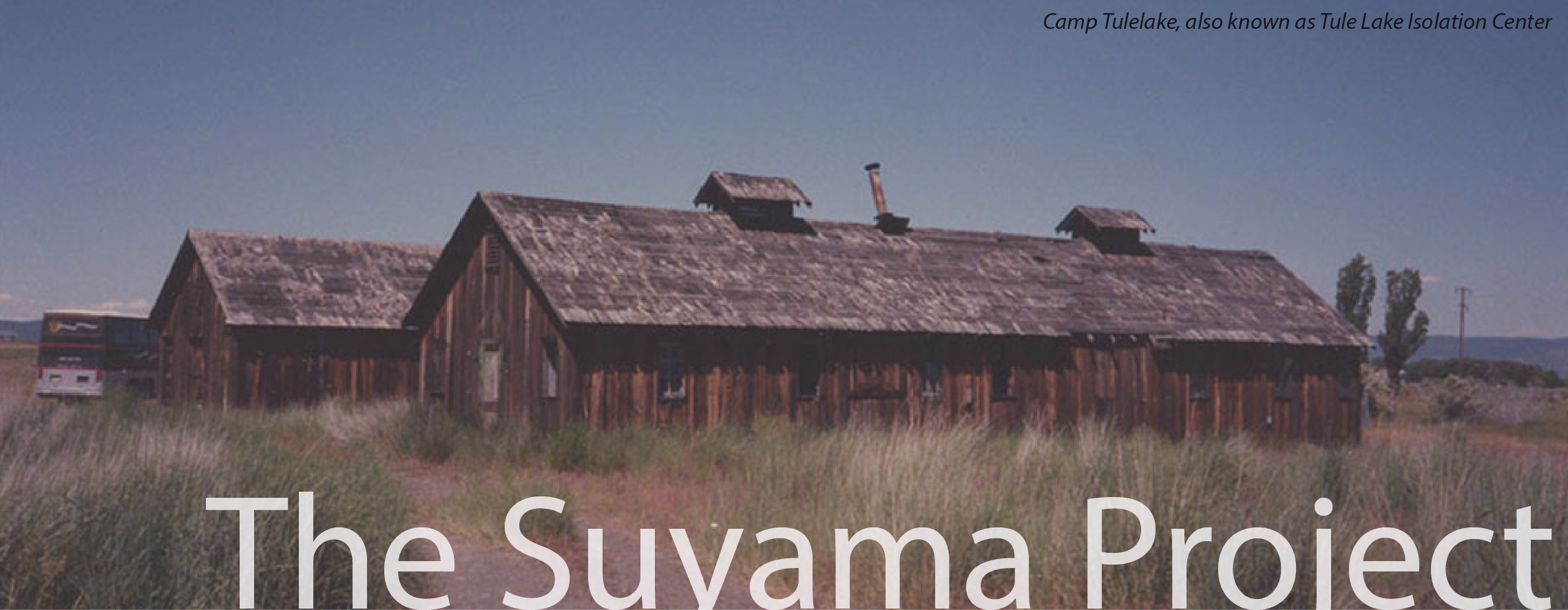
|
UCLA Asian American Studies Center's Suyama Project aims to preserve the history of Japanese American resistance during World War II, including, but not limited to the 100th/442nd Regimental Combat Team draftees, Army and draft resisters, No-Nos, renunciants, and other Nikkei dissidents of World War II. The Suyama Project is made possible through the generous gift of an anonymous donor who wanted to honor and remember the legacy of resistance, broadly understood. |
Tule Lake Citizen Isolation Center During World War II, the United States government had established three, not two citizen isolation centers as previously thought, according to groundbreaking research done by Roger Daniels, emeritus history professor and pioneer scholar in Japanese American history and Barbara Takei, an independent writer/researcher and Tule Lake Committee chief financial officer.
The two already-known isolation centers are the Moab, Utah and Leupp, Ariz., citizen isolation centers, which were created to imprison U.S. citizens of Japanese descent whom the government deemed as "troublemakers." Those who ended up at Moab or Leupp were arrested without charge, received no hearings and were imprisoned indefinitely.
The third isolation center is the former Civilian Conservation Corp (CCC) camp on Hill Road in Northern Calif., currently designated by the National Park Service (NPS) as Camp Tulelake.
Wartime archival documents repeatedly refer to this location as an "isolation center," according to Takei.
The site was used to imprison Tule Lake men, who refused to register for the controversial loyalty questionnaire. The arrest took place in February 1943. Initially, 32 men from Block 42 were imprisoned at the Alturas and Klamath Falls jails for about seven days without charge, before being shipped to the former CCC camp on Hill Road.
The alleged leaders of the Block 42 men were sent to the Moab Citizen Isolation Center, another former CCC camp, which had been converted into an isolation center in December 1942, following a rebellion at the Manzanar War Relocation Authority camp.
When Moab could no longer accommodate the expanding prison population, the government closed Moab and turned a former boarding school on the Navajo reservation into another citizen isolation center at Leupp, Ariz., in April 1943.
However, the Leupp citizen isolation center did not have the capacity to accommodate the hundreds of Tule Lake men who were refusing to cooperate with the loyalty questionnaire registration process, and as a result, the government imprisoned them at the isolation center at Hill Road, near Tule Lake. The population at this isolation center ballooned to more than 100 Tuleans before it was closed down.
The Leupp citizen isolation center had, at its height, roughly 80 inmates, who were guarded by 150 military police.
The government quietly closed down Leupp, the last of the three isolation centers on Dec. 2, 1943, after officials realized the illegality of imprisoning U.S. citizens indefinitely, without charge. The remaining 71 inmates from Leupp were transferred to the Tule Lake Segregation Center.
Meanwhile, the isolation center at Tule Lake was used a second time to house another group of Japanese Americans in October 1943. This second group was inmates from other WRA camps, sent to Tule Lake to harvest the camp crops after the Tule Lake farm workers went on strike.
In May 1944, this location underwent yet another transformation to house Italian and German Prisoners of War.
According to Superintendent Larry Whalon, who oversees the Tule Lake Unit of the World War II Valor in the Pacific National Monument, the CCC camp built at this location was constructed in 1935 and had been named "Camp Tulelake" at one point when it was under the Bureau of Reclamation. Whalon noted that the National Register lists the period from 1935 to 1946 as a period of significance for this location.
The NPS's publication, "Confinement and Ethnicity: An Overview of World War II Japanese American Relocation Sites" refers to the remaining structure at this location as the "Tulelake CCC Camp." |